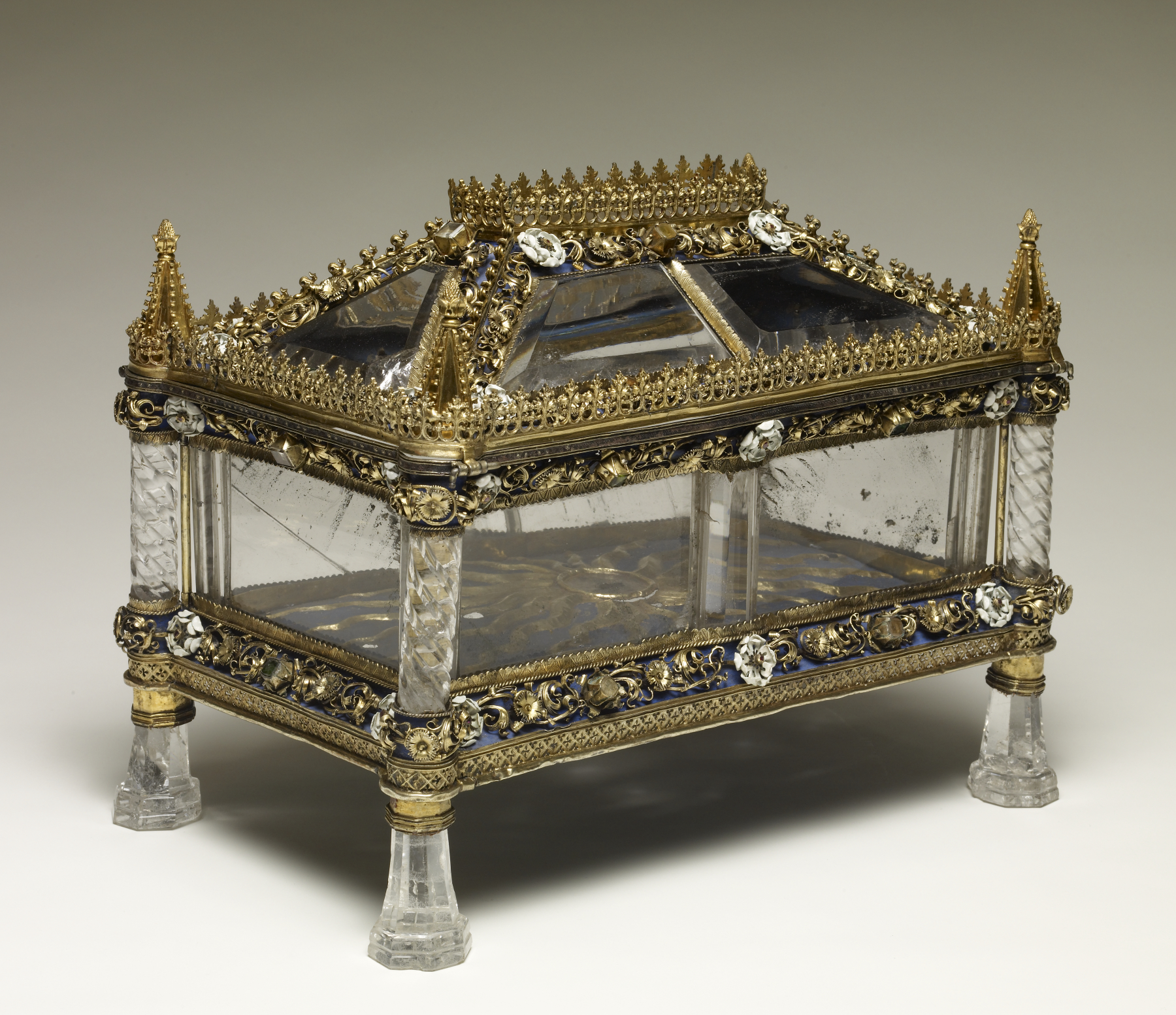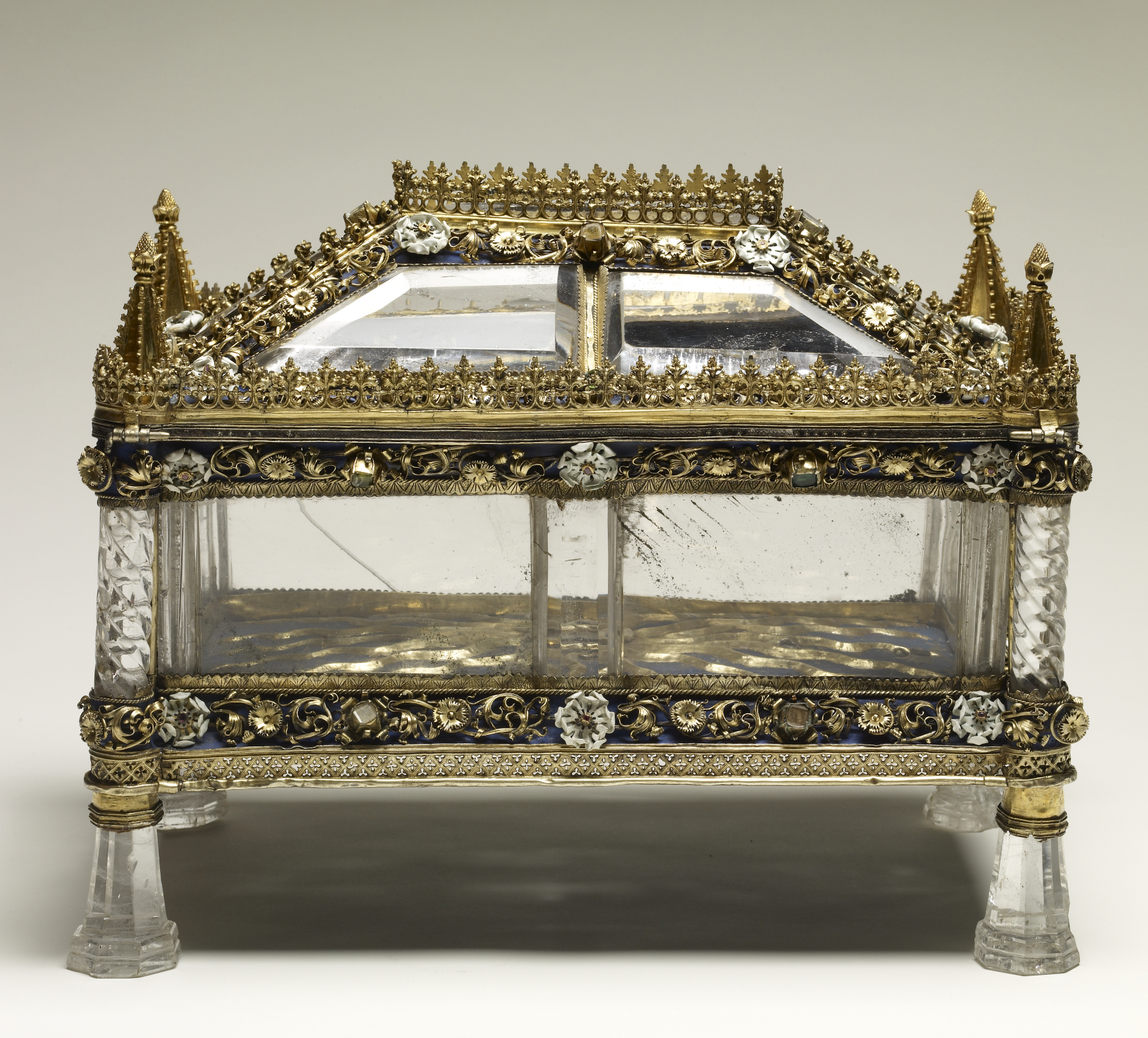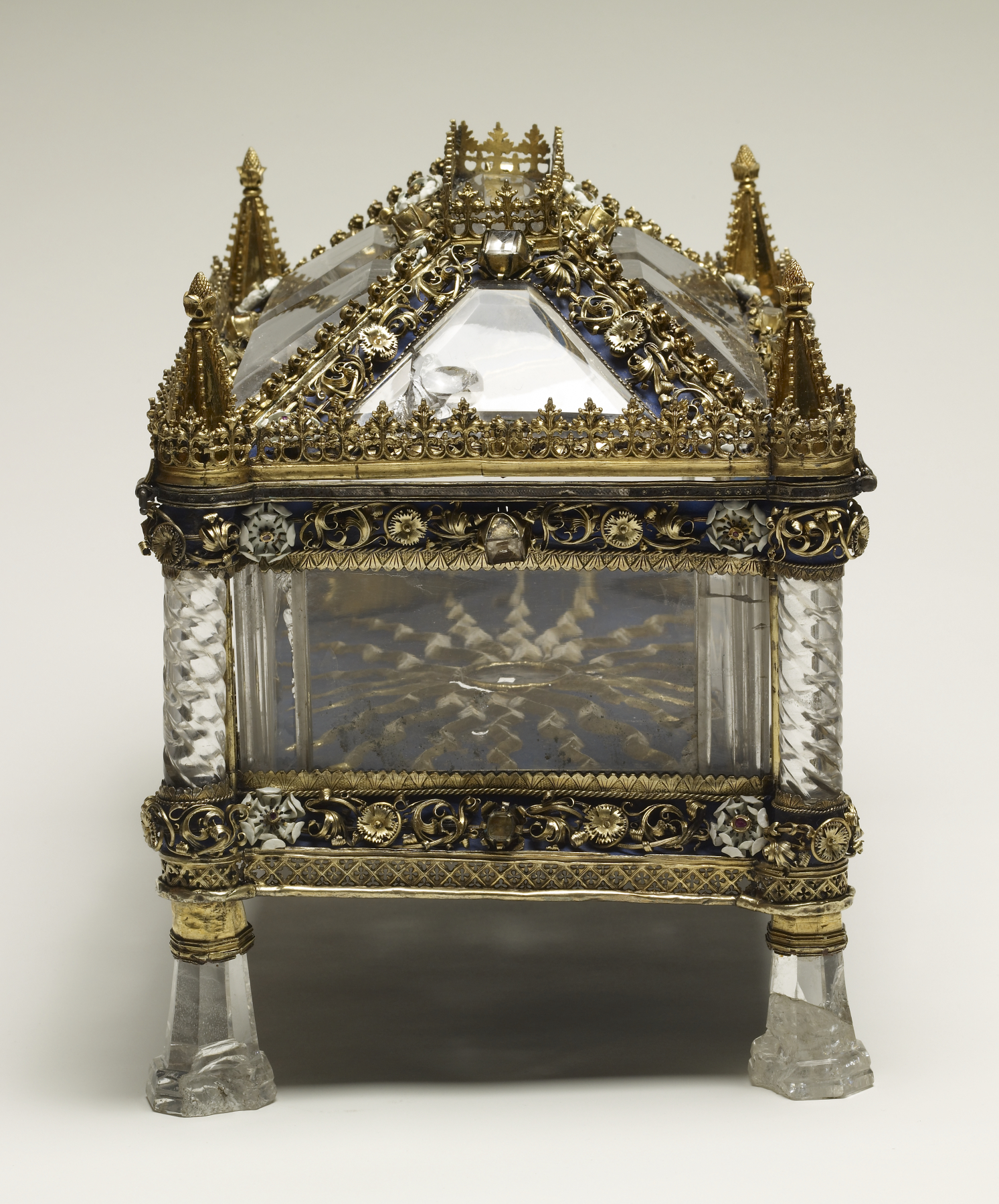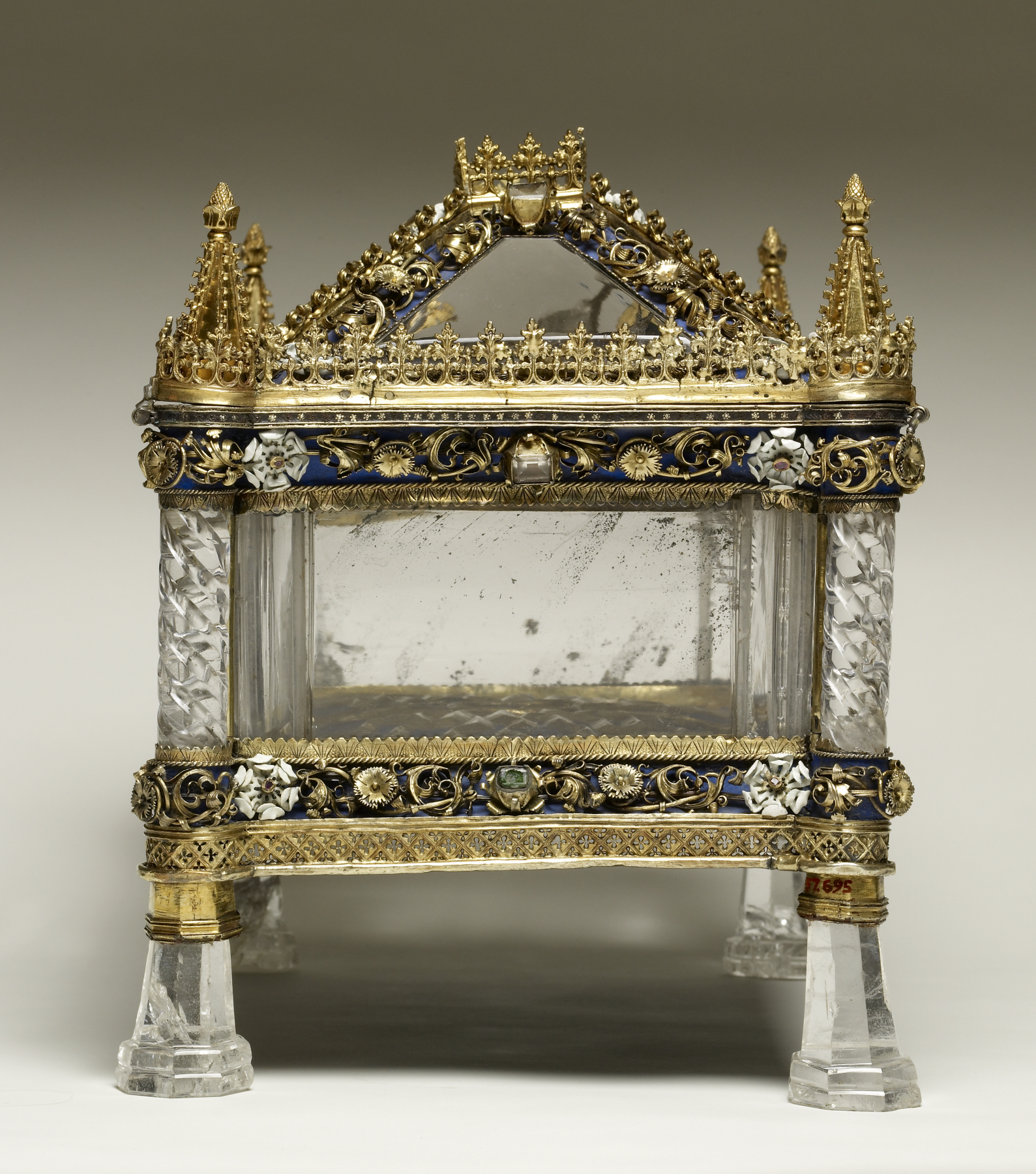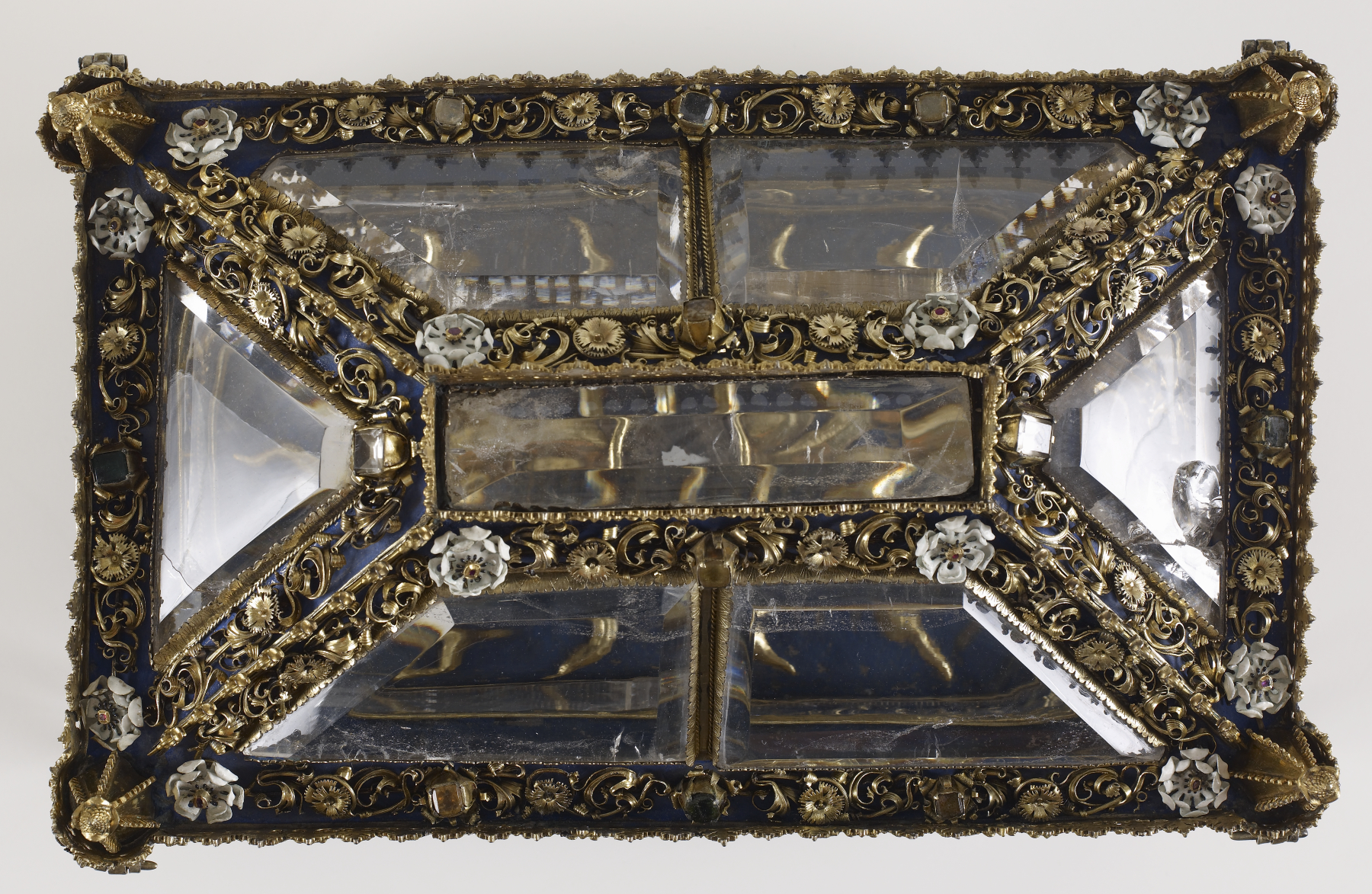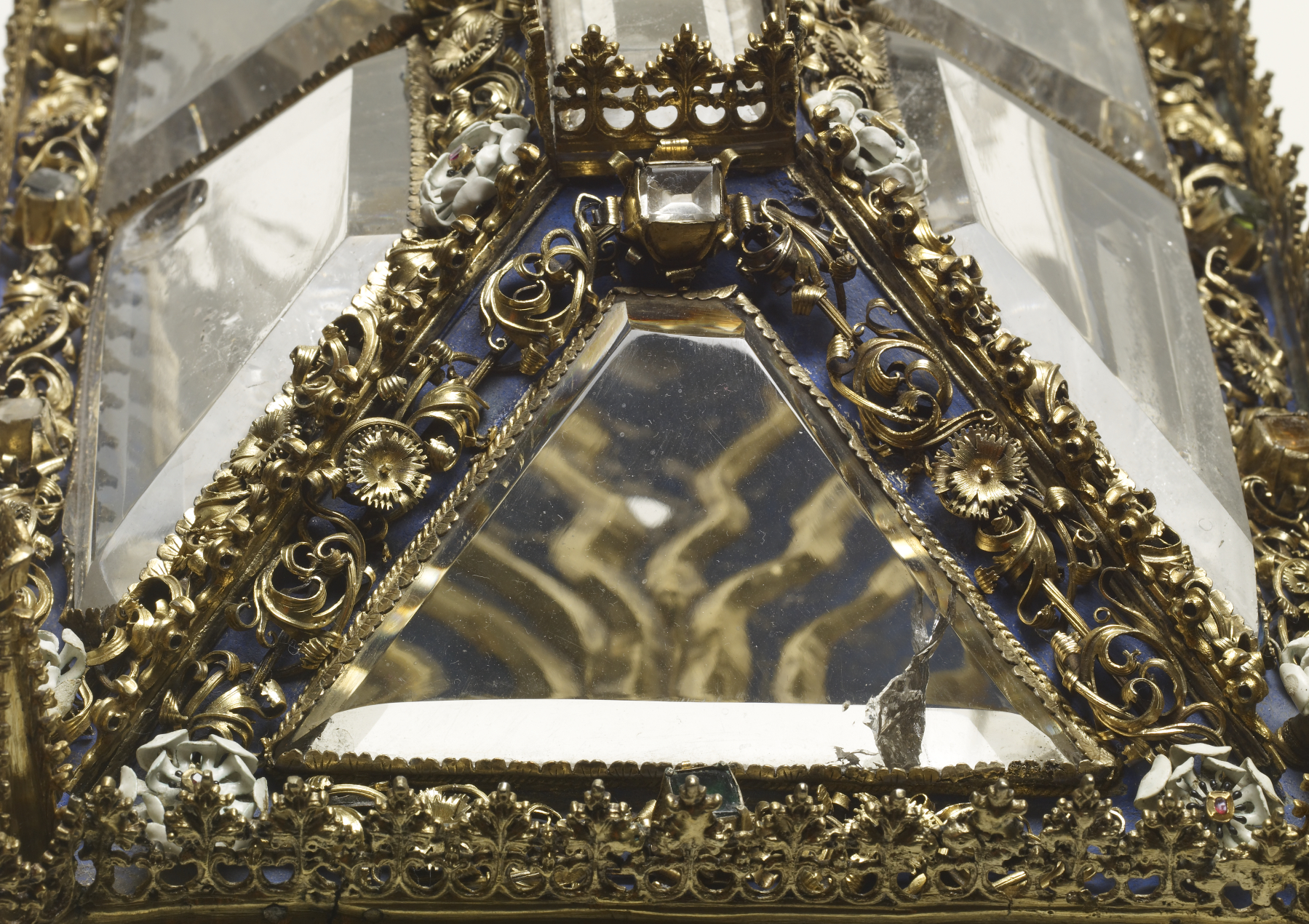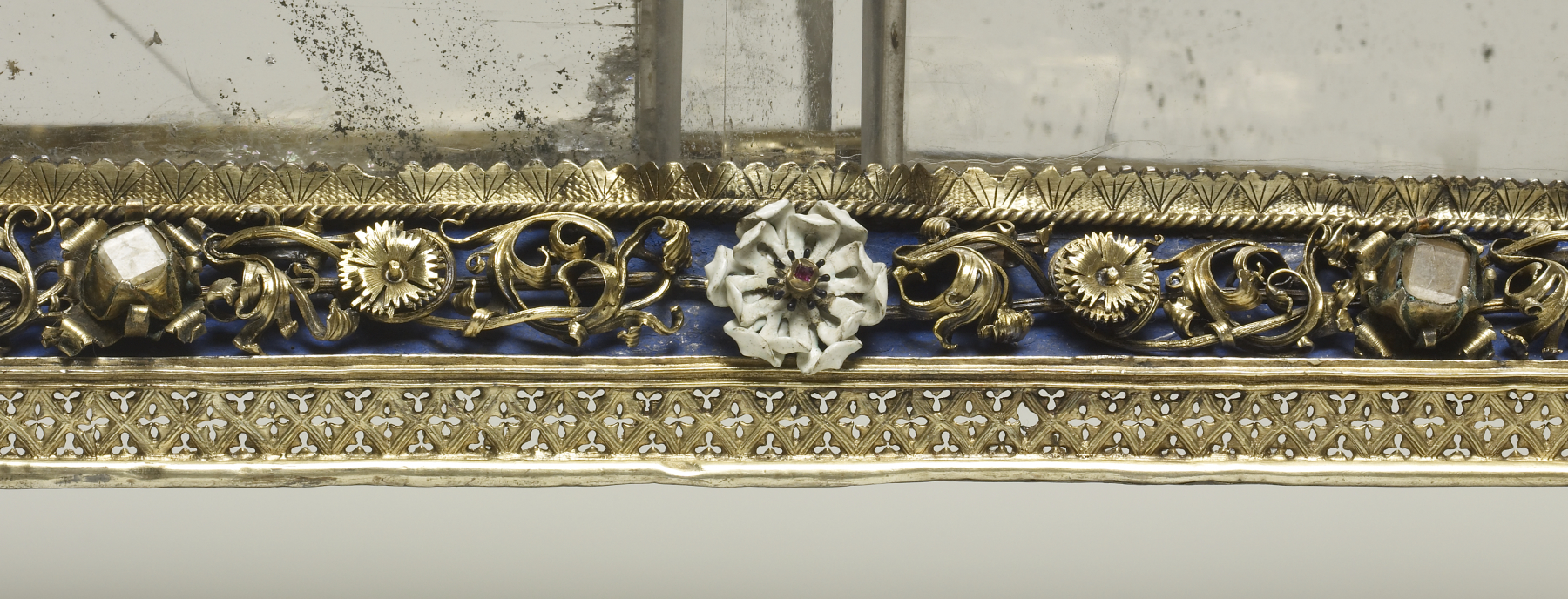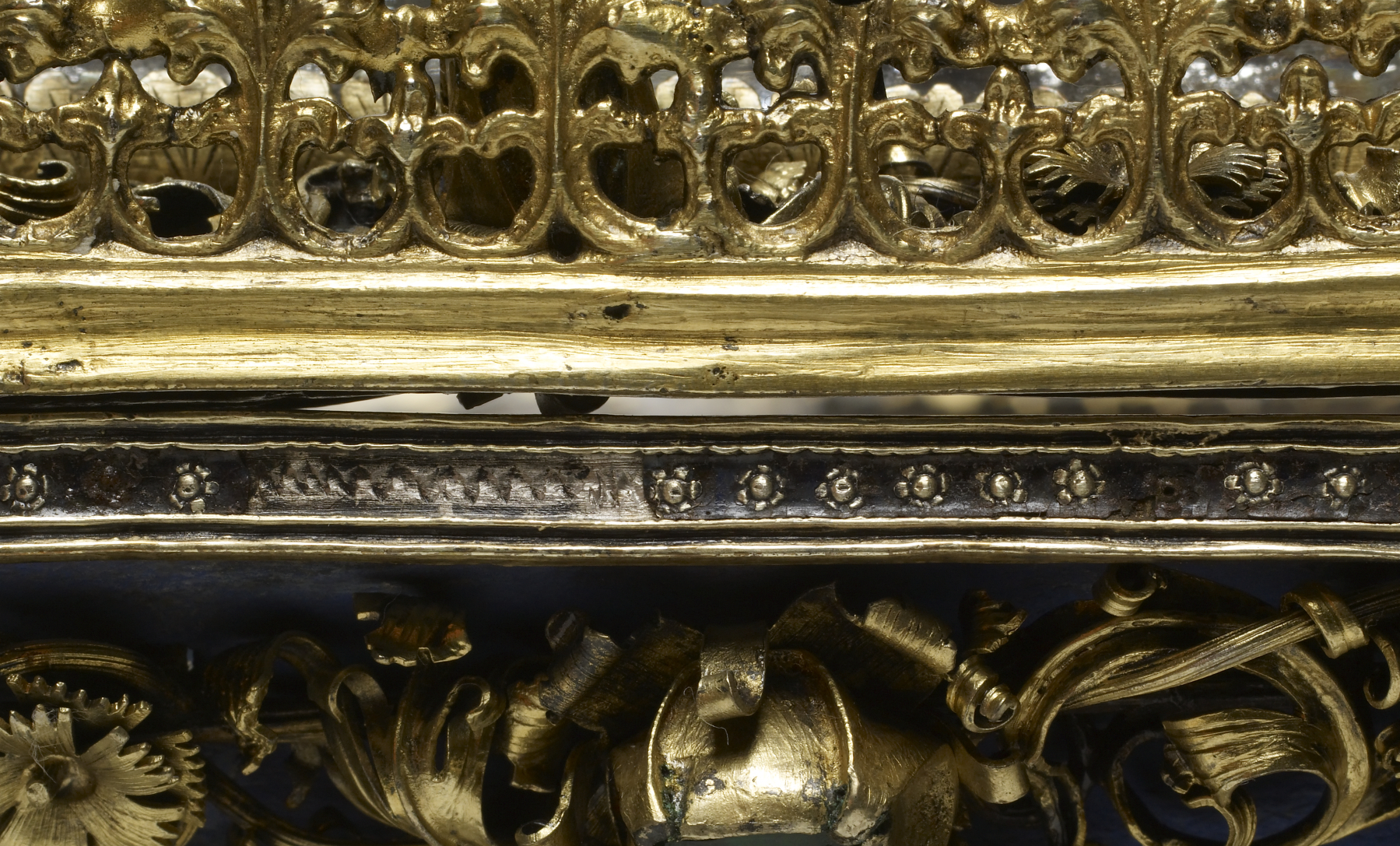Rock Crystal Casket
(Renaissance Europe , Medieval Europe )
The workmanship of this casket points to the court of the dukes of Burgundy in the late 1400s. Transparent rock crystal could protect, yet allow the viewing of, a treasured object placed at the center of the emanating rays and secured with clips in the base. The white rose is the emblem of the English royal house of York. Margaret of York (1446-1503), married Charles the Bold, duke of Burgundy, in 1468. She was a patron of religious institutions in the Netherlands, and the casket is surely a reliquary.
In the Chamber of Wonders installation, evoking a 17th-c. collection in the circle of the Archdukes Albert and Isabella, rulers of the Spanish Netherlands (present-day Belgium), this splendid casket object is featured in part because the Lands of the dukes of Burgundy (much of the Southern Netherlands) were inherited by the Habsburg family (then controling much of Europe) through marriage over a century before the time of Albert and Isabella. Isabella, daughter of the Habsburg king of Spain, included among her various titles "Duchess of Burgundy." The Habsburgs strove to associate themselves with Burgundian splendor.
Provenance
Provenance (from the French provenir, 'to come from/forth') is the chronology of the ownership, custody, or location of a historical object. Learn more about provenance at the Walters.
Henry Walters, Baltimore [date and mode of acquisition unknown]; Walters Art Museum, 1931, by bequest.
Conservation
| Date | Description | Narrative |
|---|---|---|
| 8/4/1960 | Treatment | cleaned; loss compensation; coated |
Geographies
Netherlands (Place of Origin)
Measurements
H: 12 3/16 x W: 15 3/4 x D: 9 13/16 in. (31 x 40 x 25 cm)
Credit Line
Acquired by Henry Walters
Location in Museum
Accession Number
In libraries, galleries, museums, and archives, an accession number is a unique identifier assigned to each object in the collection.
In libraries, galleries, museums, and archives, an accession number is a unique identifier assigned to each object in the collection.
57.695

